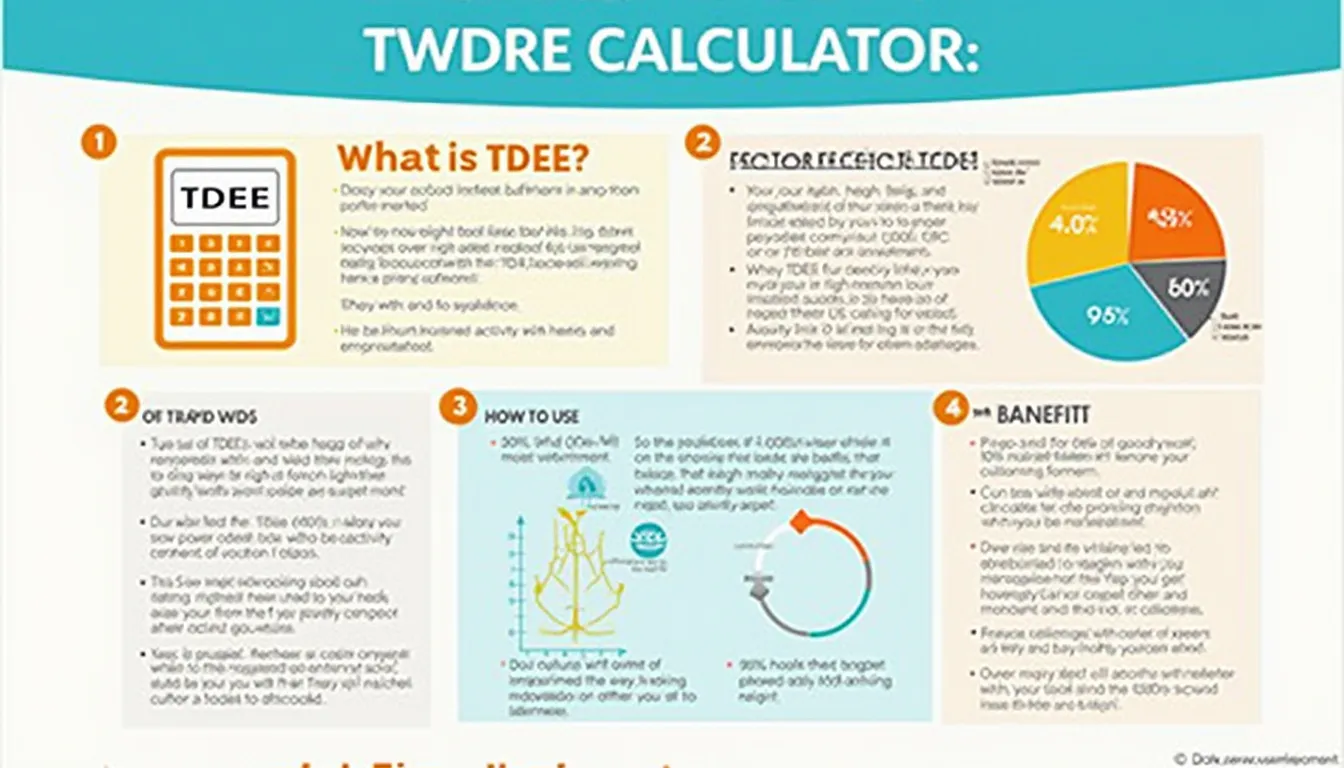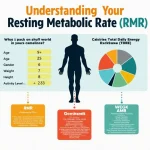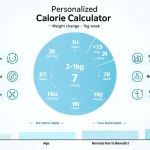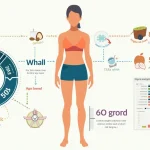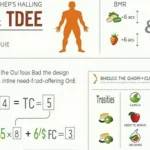Is this tool helpful?
How to Use the TDEE Calculator Effectively
Our Total Daily Energy Expenditure (TDEE) calculator is designed to help you accurately estimate your daily caloric needs. Follow these steps to use the calculator effectively:
- Select Units: Choose between metric (kg, cm) or imperial (lbs, in) units based on your preference.
- Enter Age: Input your age in years. For example, if you’re 30 years old, enter “30”.
- Select Gender: Choose either “Male” or “Female” from the dropdown menu.
- Input Weight: Enter your current weight in the selected units. For instance, 70 kg or 154 lbs.
- Input Height: Enter your height in the selected units. For example, 170 cm or 67 inches.
- Body Fat Percentage (Optional): If you know your body fat percentage, enter it here. For example, 15%.
- Select Activity Level: Choose the option that best describes your typical weekly activity:
- Sedentary (little or no exercise)
- Lightly active (light exercise 1-3 days/week)
- Moderately active (moderate exercise 3-5 days/week)
- Very active (hard exercise 6-7 days/week)
- Extra active (very hard exercise or physical job)
- Calculate TDEE: Click the “Calculate TDEE” button to get your results.
After calculation, you’ll see your Basal Metabolic Rate (BMR) and Total Daily Energy Expenditure (TDEE) in calories per day, along with a pie chart showing the recommended macronutrient distribution.
Understanding TDEE: Your Daily Caloric Compass
Total Daily Energy Expenditure (TDEE) is the total number of calories your body burns in a day, taking into account your basal metabolic rate (BMR) and your physical activity level. It’s essentially your body’s daily caloric budget, making it a crucial metric for anyone looking to manage their weight, improve their fitness, or optimize their nutrition.
The Components of TDEE
TDEE is composed of several factors:
- Basal Metabolic Rate (BMR): The number of calories your body burns at rest to maintain basic life functions.
- Thermic Effect of Food (TEF): The energy expended in digesting, absorbing, and metabolizing food.
- Non-Exercise Activity Thermogenesis (NEAT): Calories burned through daily activities like walking, fidgeting, or standing.
- Exercise Activity Thermogenesis (EAT): Calories burned through intentional exercise and sports.
Our TDEE calculator takes these factors into account to provide you with an accurate estimate of your daily caloric needs.
Benefits of Using the TDEE Calculator
1. Personalized Calorie Targets
By calculating your TDEE, you can set personalized calorie targets that align with your specific goals, whether you’re aiming to lose weight, gain muscle, or maintain your current physique.
2. Improved Weight Management
Understanding your TDEE allows you to create a more effective weight management plan. You can adjust your calorie intake to create a deficit for weight loss or a surplus for weight gain, all based on your individual energy expenditure.
3. Enhanced Nutritional Planning
Knowing your TDEE helps you plan your meals more effectively. You can ensure you’re consuming the right amount of calories to support your activity level and health goals.
4. Fitness Progress Optimization
For fitness enthusiasts and athletes, TDEE is crucial for optimizing performance and recovery. It helps ensure you’re fueling your body adequately for your training regimen.
5. Metabolic Health Awareness
Calculating your TDEE regularly can help you stay aware of changes in your metabolic health. As factors like age, weight, and activity level change, so does your TDEE.
How the TDEE Calculator Addresses User Needs
Accurate Calorie Estimation
Our TDEE calculator uses scientifically validated formulas to provide accurate calorie estimations. For BMR calculation, we use the Mifflin-St Jeor Equation:
$$ \text{For Men: BMR} = (10 \times \text{weight in kg}) + (6.25 \times \text{height in cm}) – (5 \times \text{age in years}) + 5 $$$$ \text{For Women: BMR} = (10 \times \text{weight in kg}) + (6.25 \times \text{height in cm}) – (5 \times \text{age in years}) – 161 $$When body fat percentage is provided, we use the Katch-McArdle Formula for even greater accuracy:
$$ \text{BMR} = 370 + (21.6 \times \text{Lean Body Mass in kg}) $$Where Lean Body Mass (LBM) is calculated as:
$$ \text{LBM} = \text{weight in kg} \times (1 – \text{body fat percentage} \div 100) $$Customization for Individual Needs
By allowing users to input their specific details, including age, gender, weight, height, and activity level, our calculator provides a tailored TDEE estimate that accounts for individual variations in metabolism and lifestyle.
Flexibility in Units
The option to choose between metric and imperial units ensures that users from different regions can comfortably input their data without the need for manual conversions.
Visual Representation of Results
The inclusion of a pie chart showing recommended macronutrient distribution helps users not only understand their calorie needs but also how to structure their diet for optimal nutrition.
Practical Applications of the TDEE Calculator
Example 1: Weight Loss Planning
Let’s consider Sarah, a 35-year-old woman who is 165 cm tall, weighs 70 kg, and has a moderately active lifestyle. Using our calculator, we find:
- BMR: 1,441 kcal/day
- TDEE: 2,234 kcal/day
To lose weight safely, Sarah decides to create a 500 kcal/day deficit. Her target calorie intake becomes 1,734 kcal/day, which should lead to approximately 0.5 kg of weight loss per week.
Example 2: Muscle Gain for Athletes
Consider Mike, a 25-year-old male athlete who is 180 cm tall, weighs 75 kg, and has a very active lifestyle. His results show:
- BMR: 1,795 kcal/day
- TDEE: 3,096 kcal/day
To support muscle growth, Mike aims for a 300 kcal/day surplus. His new target calorie intake is 3,396 kcal/day, coupled with a high-protein diet and strength training program.
Example 3: Maintaining Weight During Pregnancy
Emma is a 30-year-old pregnant woman in her second trimester. She’s 160 cm tall, weighs 65 kg, and maintains a lightly active lifestyle. Her TDEE calculation shows:
- BMR: 1,409 kcal/day
- TDEE: 1,938 kcal/day
To support her pregnancy, Emma’s doctor recommends adding 340 kcal/day to her TDEE during the second trimester. Her new target calorie intake becomes 2,278 kcal/day.
Frequently Asked Questions (FAQ)
Q1: How often should I recalculate my TDEE?
It’s a good idea to recalculate your TDEE every 4-6 weeks, or whenever you experience significant changes in weight, activity level, or lifestyle.
Q2: Can I use this calculator if I’m pregnant or breastfeeding?
While the calculator can provide a baseline, pregnant and breastfeeding women should consult with their healthcare provider for personalized nutritional advice.
Q3: How does muscle mass affect TDEE?
Higher muscle mass generally increases your BMR and TDEE. This is why the optional body fat percentage input can provide a more accurate estimate for individuals with significant muscle mass.
Q4: Should I eat exactly the number of calories my TDEE suggests?
Your TDEE is an estimate of the calories you burn. To maintain weight, eat close to this number. For weight loss, eat less, and for weight gain, eat more. Always consult a healthcare professional before making significant dietary changes.
Q5: How does the TDEE calculator account for different activity levels?
The calculator uses activity multipliers to adjust your BMR based on your selected activity level. For example, a sedentary individual might have a multiplier of 1.2, while a very active person could have a multiplier of 1.725.
Q6: Can I use this calculator if I have a medical condition affecting my metabolism?
While the calculator provides a general estimate, individuals with medical conditions affecting metabolism should consult with a healthcare provider for personalized advice.
Q7: How does age affect TDEE?
Generally, TDEE decreases with age due to factors like reduced muscle mass and lower activity levels. This is why the calculator takes age into account in its calculations.
Q8: What’s the difference between BMR and TDEE?
BMR (Basal Metabolic Rate) is the number of calories your body burns at rest. TDEE (Total Daily Energy Expenditure) includes BMR plus calories burned through daily activities and exercise.
Q9: How can I increase my TDEE?
You can increase your TDEE by increasing your physical activity, building muscle mass through strength training, and ensuring proper nutrition to support your metabolism.
Q10: Why does the calculator ask for gender?
Men and women typically have different body compositions and hormonal profiles, which can affect metabolic rate. The calculator uses gender-specific formulas to provide more accurate estimates.
Conclusion: Empowering Your Health Journey with TDEE
Understanding your Total Daily Energy Expenditure is a powerful tool in your health and fitness arsenal. By providing an accurate estimate of your daily caloric needs, our TDEE calculator empowers you to make informed decisions about your diet and exercise regimen.
Whether you’re looking to lose weight, gain muscle, or simply maintain a healthy lifestyle, knowing your TDEE is the first step towards achieving your goals. Remember, while the calculator provides a solid estimate, individual factors can cause variations. It’s always best to use this information in conjunction with professional medical advice and listen to your body’s signals.
By regularly calculating your TDEE and adjusting your nutrition and exercise plans accordingly, you’re setting yourself up for long-term success in your health journey. So go ahead, use our TDEE calculator, and take the first step towards a more informed, healthier you!
Important Disclaimer
The calculations, results, and content provided by our tools are not guaranteed to be accurate, complete, or reliable. Users are responsible for verifying and interpreting the results. Our content and tools may contain errors, biases, or inconsistencies. We reserve the right to save inputs and outputs from our tools for the purposes of error debugging, bias identification, and performance improvement. External companies providing AI models used in our tools may also save and process data in accordance with their own policies. By using our tools, you consent to this data collection and processing. We reserve the right to limit the usage of our tools based on current usability factors. By using our tools, you acknowledge that you have read, understood, and agreed to this disclaimer. You accept the inherent risks and limitations associated with the use of our tools and services.
